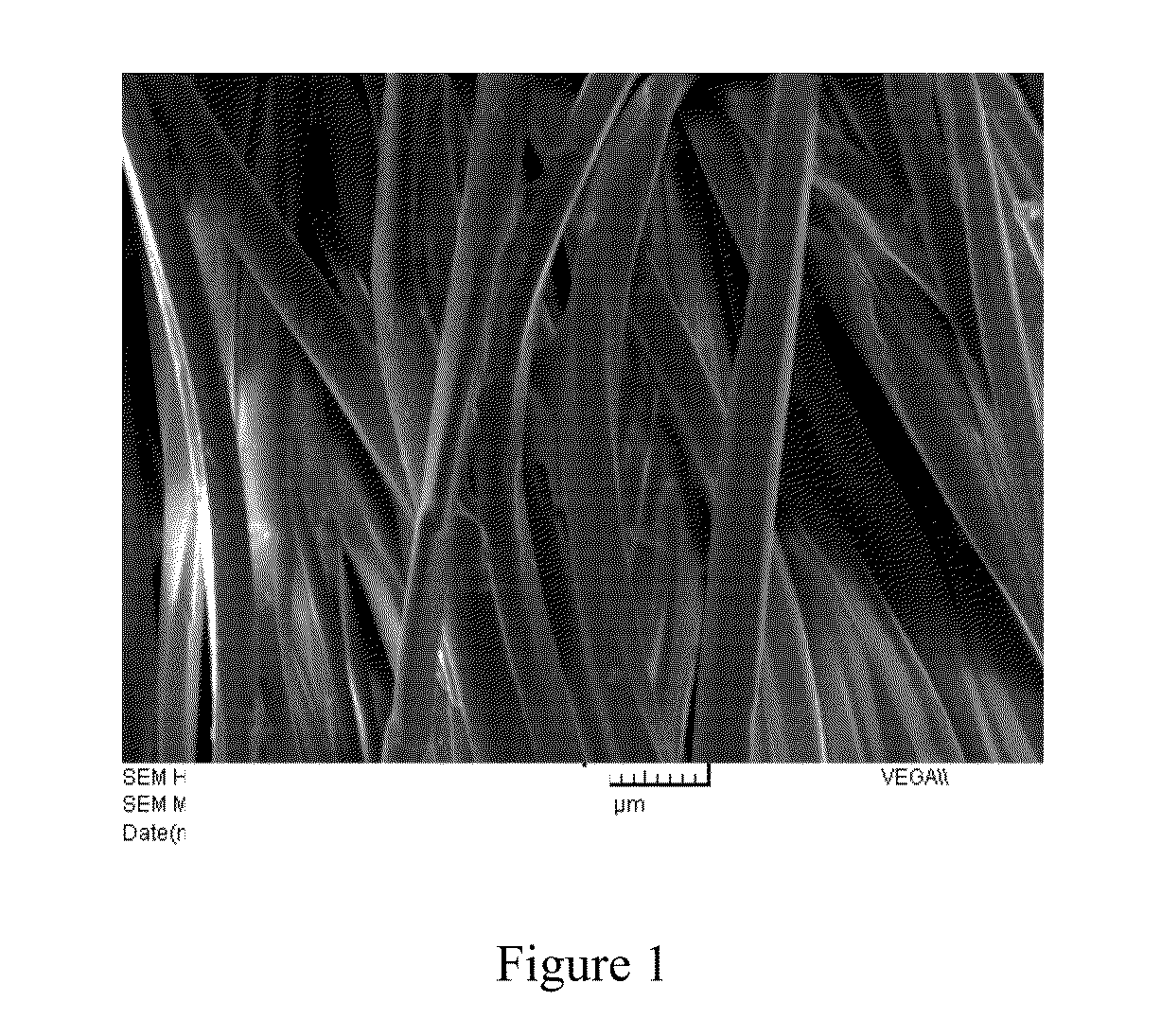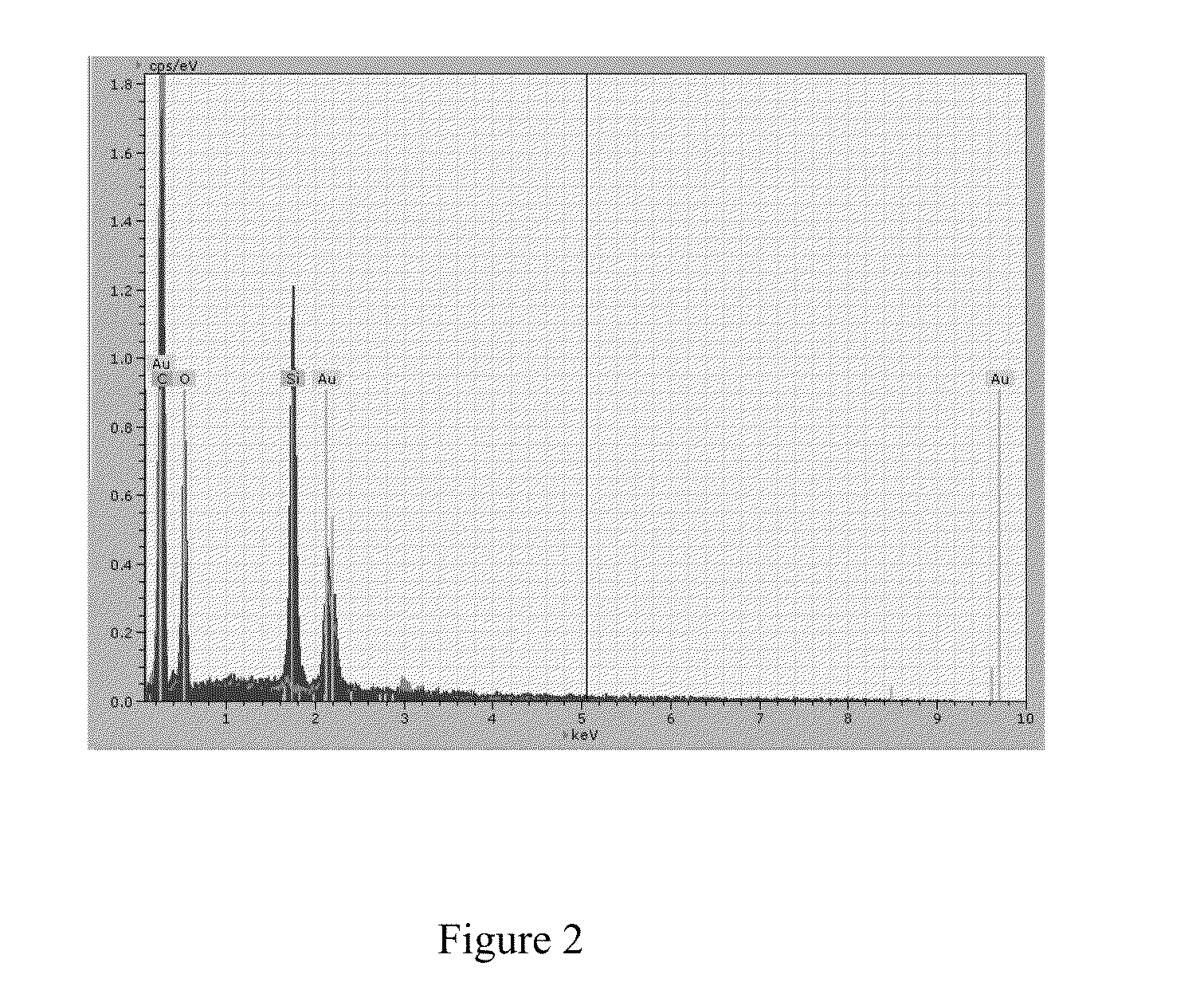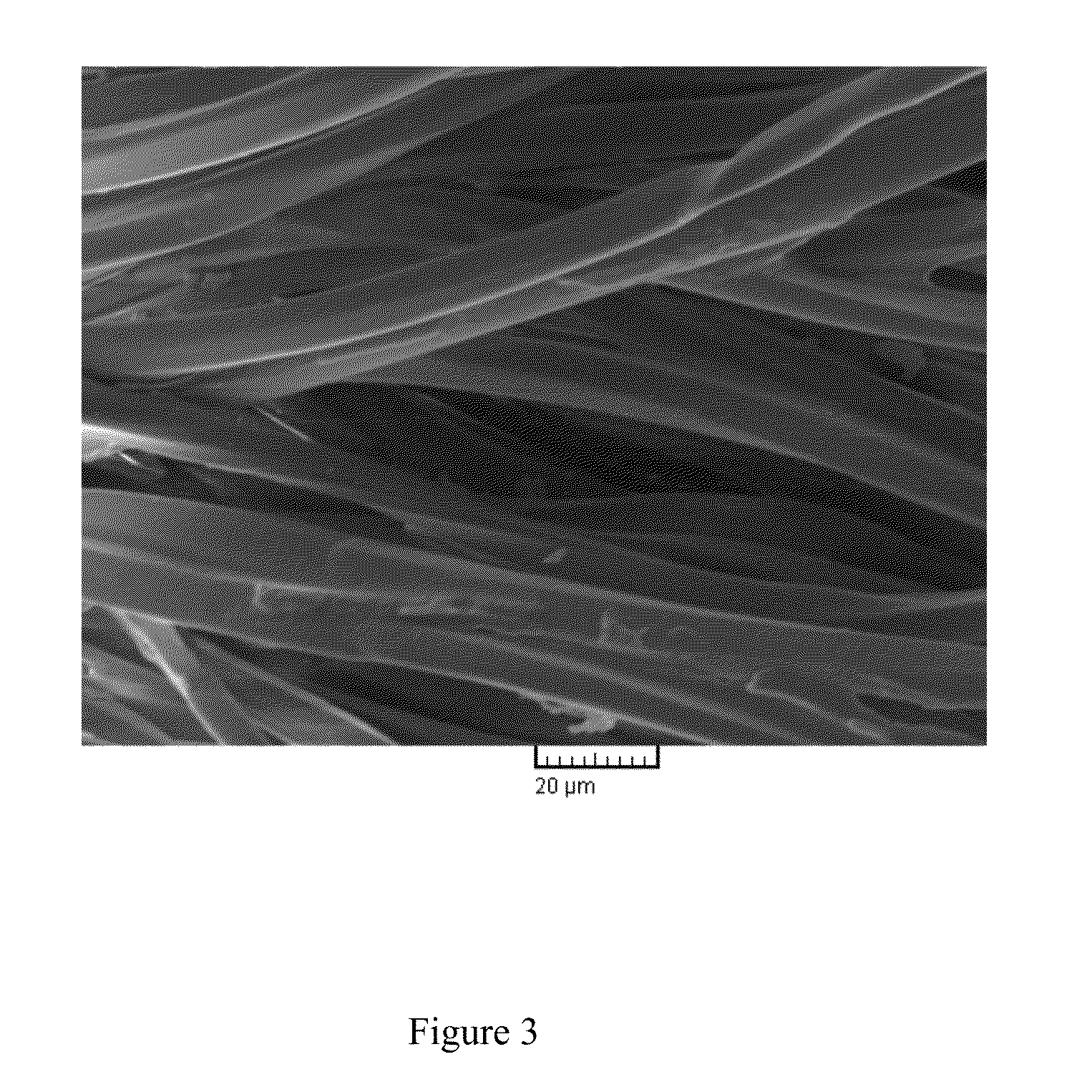Non-fluoro hydrophobic aqueous-based polyurethane resin dispersion, and production method and use thereof
- Summary
- Abstract
- Description
- Claims
- Application Information
AI Technical Summary
Benefits of technology
Problems solved by technology
Method used
Image
Examples
example 1
The Preparation of Isocyanate Terminated Polyurethane (PU) Prepolymer
[0063]Taking 13.4 g of 2,2′-bis(hydroxymethyl) propionic acid (DMPA) and 200 g of polytetramethylene ether glycol (PTMEG-2000) separately and placing them into four-necked reaction tank, and heating to 140° C. to melt DMPA and stirring it with mechanical agitation evenly. Wait for the temperature drop to 80° C., adding 0.1%(w / w) catalyst (T-12) and 66.6 g of isophorone diisocyanate (IPDI) and keep reaction temperature below 86° C. with stirring until the reaction is completed (NCO % below the calculated value). After the reaction is completed, processing NCO titration to analyze the degree of reaction, as long as it reaches NCO % is less than 3% and remains at that value for one hour. Further using FT-IR to determine the presence of the NCO peak (near 2267 cm−1) in order to make sure that if the reaction is completed.
example 2
Preparing aliphatic long chain carbon-carbon bond containing PU oligomer
[0064]Using isocyanate functional groups having selective diisocyantes (polyisocyantes, IPDI)), triol (glycerol or trimethylolpropane, TMP) and long chain fatty alcohol compounds (fatty alcohol or higher alcohol), by using an excess amount of isocyanates (IPDI), and then adding minor catalyst, dibutyltin dilaurate (DBTDL) to accelerate the reaction being completed. It results in the formation of NCO-terminated aliphatic long chain carbon-carbon bond containing PU oligomer.
example 3
The Preparation of “Single-Component Aliphatic Long Chain Carbon-Carbon Bond Containing Aqueous PU Dispersion”
[0065]Selecting polyether polyol (e.g., PPG or PTMEG), polyisocyanate (IPDI) materials, or diol compounds containing hydrophilic functional groups as internal emulsifier (for instance, dimethylol propanic acid, DMPA) and fatty alcohols (aliphatic long chain carbon-carbon bond alcohol compounds). A long chain carbon-carbon bond containing PU prepolymer having isocyanate as terminal group (with fatty alcohols involved in the reaction). Determine the amount of NCO to confirm that the reaction is completed, and adding triethylamine to neutralize and adding deionized water with a chain extender (such as diethyleneamine) to process the steps of chain extension and dispersion, and the self-emulsified aliphatic-containing aqueous PU dispersions is obtained. In this aqueous PU dispersion, adding proper quantity latent cross-linking agent (TMPTA-AZ or CX100) and maintain the pH value ...
PUM
| Property | Measurement | Unit |
|---|---|---|
| Temperature | aaaaa | aaaaa |
| Dispersion potential | aaaaa | aaaaa |
| Molecular weight | aaaaa | aaaaa |
Abstract
Description
Claims
Application Information
 Login to View More
Login to View More - R&D
- Intellectual Property
- Life Sciences
- Materials
- Tech Scout
- Unparalleled Data Quality
- Higher Quality Content
- 60% Fewer Hallucinations
Browse by: Latest US Patents, China's latest patents, Technical Efficacy Thesaurus, Application Domain, Technology Topic, Popular Technical Reports.
© 2025 PatSnap. All rights reserved.Legal|Privacy policy|Modern Slavery Act Transparency Statement|Sitemap|About US| Contact US: help@patsnap.com



